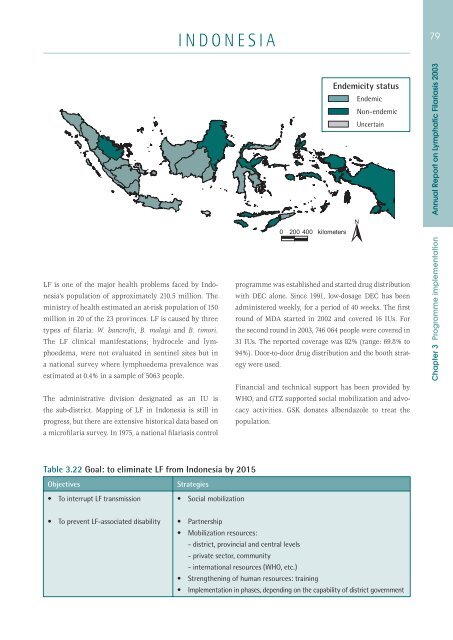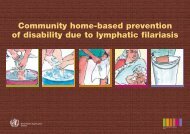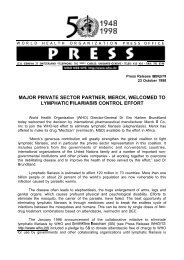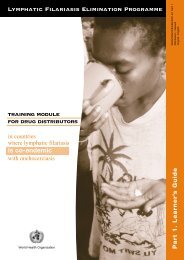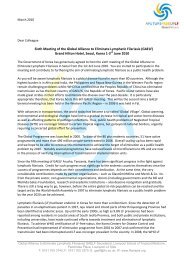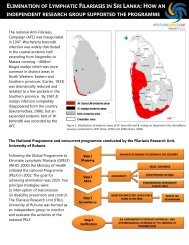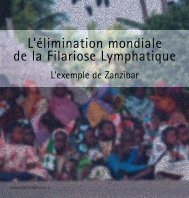Global Programme to Eliminate Lymphatic Filariasis ... - libdoc.who.int
Global Programme to Eliminate Lymphatic Filariasis ... - libdoc.who.int
Global Programme to Eliminate Lymphatic Filariasis ... - libdoc.who.int
You also want an ePaper? Increase the reach of your titles
YUMPU automatically turns print PDFs into web optimized ePapers that Google loves.
INDONESIA79Endemicity statusEndemicNon-endemicUncertainAnnual Report on <strong>Lymphatic</strong> <strong>Filariasis</strong> 2003LF is one of the major health problems faced by Indonesia’spopulation of approximately 210.5 million. Theministry of health estimated an at-risk population of 150million in 20 of the 23 provinces. LF is caused by threetypes of filaria: W. bancrofti, B. malayi and B. timori.The LF clinical manifestations; hydrocele and lymphoedema,were not evaluated in sentinel sites but ina national survey where lymphoedema prevalence wasestimated at 0.4% in a sample of 5063 people.The administrative division designated as an IU isthe sub-district. Mapping of LF in Indonesia is still inprogress, but there are extensive his<strong>to</strong>rical data based ona microfilaria survey. In 1975, a national filariasis controlprogramme was established and started drug distributionwith DEC alone. Since 1991, low-dosage DEC has beenadministered weekly, for a period of 40 weeks. The firstround of MDA started in 2002 and covered 16 IUs. Forthe second round in 2003, 746 064 people were covered in31 IUs. The reported coverage was 82% (range: 69.8% <strong>to</strong>94%). Door-<strong>to</strong>-door drug distribution and the booth strategywere used.Financial and technical support has been provided byWHO, and GTZ supported social mobilization and advocacyactivities. GSK donates albendazole <strong>to</strong> treat thepopulation.Chapter 3 <strong>Programme</strong> implementationTable 3.22 Goal: <strong>to</strong> eliminate LF from Indonesia by 2015Objectives• To <strong>int</strong>errupt LF transmissionStrategies• Social mobilization• To prevent LF-associated disability• Partnership• Mobilization resources:- district, provincial and central levels- private sec<strong>to</strong>r, community- <strong>int</strong>ernational resources (WHO, etc.)• Strengthening of human resources: training• Implementation in phases, depending on the capability of district government


